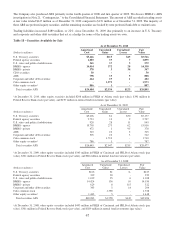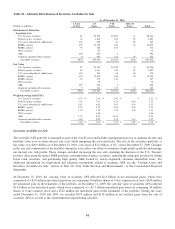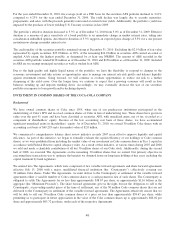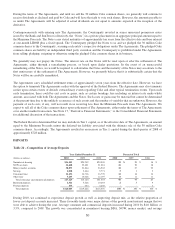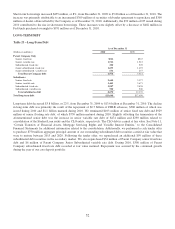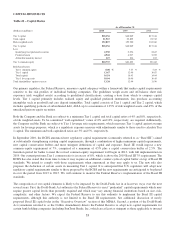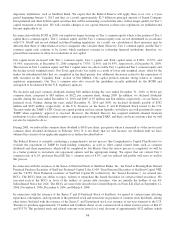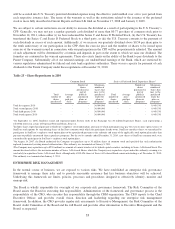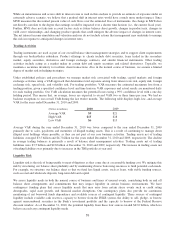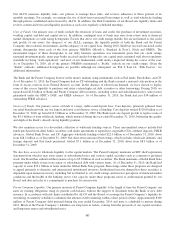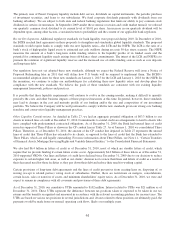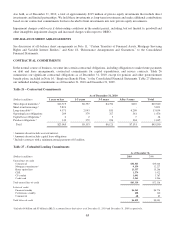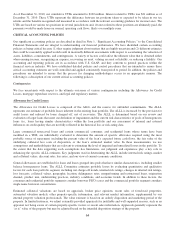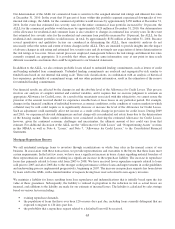SunTrust 2010 Annual Report Download - page 73
Download and view the complete annual report
Please find page 73 of the 2010 SunTrust annual report below. You can navigate through the pages in the report by either clicking on the pages listed below, or by using the keyword search tool below to find specific information within the annual report.
We have made a commitment to maintain and enhance comprehensive credit systems in order to meet business requirements
and comply with evolving regulatory standards. As part of a continuous improvement process, Credit Risk Management
evaluates potential enhancements to our risk measurement and management tools, implementing them as appropriate along
with amended credit policies and procedures.
Operational Risk Management
We face ongoing and emerging risks and regulations related to the activities that surround the delivery of banking and
financial products. Coupled with external influences such as market conditions, fraudulent activities, disasters, security risks,
country risk, and legal risk, the potential for operational and reputational loss has increased significantly.
We believe that effective management of operational risk – defined as the risk of loss resulting from inadequate or failed
internal processes, people and systems, or from external events – plays a major role in both the level and the stability of the
profitability of the institution. Our Operational Risk Management function oversees an enterprise-wide framework intended
to identify, assess, control, quantify, monitor, and report on operational risks Company wide. These efforts support our goals
in seeking to minimize operational losses and strengthen our performance by optimizing operational capital allocation.
Operational Risk Management is overseen by our CORO, who reports directly to the CRO. The operational risk governance
structure also includes a risk manager and support staff embedded within each line of business and corporate function. These
risk managers also report indirectly to the CORO and are responsible for execution of the Operational Risk Management
program within their areas.
Market Risk Management
Market risk refers to potential losses arising from changes in interest rates, foreign exchange rates, equity prices, commodity
prices, and other relevant market rates or prices. Interest rate risk, defined as the exposure of net interest income and MVE to
adverse movements in interest rates, is our primary market risk, and mainly arises from the structure of the balance sheet. We
are also exposed to market risk in our trading activities, investment portfolio, Coke common stock, MSRs, loan warehouse
and pipeline, and debt and brokered deposits carried at fair value. The ALCO meets regularly and is responsible for
reviewing our open positions and establishing policies to monitor and limit exposure to market risk. The policies established
by ALCO are reviewed and approved by our Board.
Market Risk from Non-Trading Activities
The primary goal of interest rate risk management is to control exposure to interest rate risk, both within policy limits
approved by the Board and within narrower guidelines established by ALCO. These limits and guidelines reflect our
tolerance for interest rate risk over both short-term and long-term horizons.
The major sources of our non-trading interest rate risk are timing differences in the maturity and repricing characteristics of
assets and liabilities, changes in the shape of the yield curve, and the potential exercise of explicit or embedded options. We
measure these risks and their impact by identifying and quantifying exposures through the use of sophisticated simulation
and valuation models.
One of the primary methods that we use to quantify and manage interest rate risk is simulation analysis, which is used to
model net interest income from assets, liabilities, and derivative positions under various interest rate scenarios and balance
sheet structures. This analysis measures the sensitivity of net interest income over a two year time horizon. Key assumptions
in the simulation analysis (and in the valuation analysis discussed below) relate to the behavior of interest rates and spreads,
the changes in product balances and the behavior of loan and deposit clients in different rate environments. This analysis
incorporates several assumptions, the most material of which relate to the repricing characteristics and balance fluctuations
of deposits with indeterminate or non-contractual maturities.
As the future path of interest rates cannot be known in advance, we use simulation analysis to project net interest income
under various interest rate scenarios including implied forward and deliberately extreme and perhaps unlikely scenarios. The
analyses may include rapid and gradual ramping of interest rates, rate shocks, basis risk analysis, and yield curve twists. Each
57


